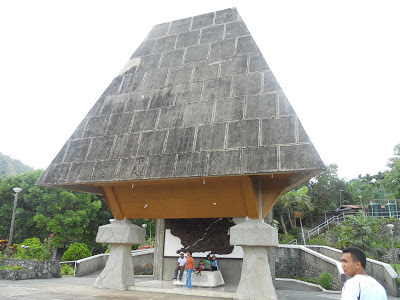Ifugao's cultures and landscapes have drawn visitors for centuries.
However, it was in the 1970s, after President Ferdinand Marcos
decreed the rice terraces as Philippine cultural treasures, that
tourism emerged as itself a major narrative force in the long Ifugao
story.
With the Philippine government actively promoting tourism in Ifugao,
visitors began to pile into the mountains in unprecedented numbers.
Many were Filipinos, but with the rise in the rice terraces'
international profile, especially with UNESCO World Heritage
attention in the 1990s, these were joined by an accelerating influx
of foreigners from all over the world.
This new invasion, a fair bit more complicated than those before, descended upon the municipality of
Banaue. The town was to become the ground zero of tourism in Ifugao,
with a whole new industry and its infrastructure springing up to
accommodate, feed, guide and merchandise to these visitors.
It was a reactive process, and one which has not especially pleased
the inhabitants. One of them wryly remarked that the rice terraces in
Banaue town have become "house terraces". A UNESCO report
in 2008 elaborated:
From a pristine valley of rice terraces, healthy muyongs
(forests) and
clustered hamlets bisected by a clean river, Banaue has been
transformed into an unattractive town blighted by spontaneous and
uncontrolled development. Structures have been built randomly
everywhere. Large areas of muyong
have been destroyed, causing erosion, and the river has been polluted
with industrial and household waste. Modern music blares from most
houses and the noise and pollution from vehicles has made the place
less liveable.
At the same time, this invasion has not been without some benefits.
With Ifugao now renowned across the world, awareness grows of the
robust eco-cultural way of life that has sustained its people through
challenges – human and environmental alike – that have broken
civilizations the world over. Through the curiosity this stirs,
tourism offers quite some opportunities to help strengthen and
conserve that impeccable heritage.
To harness the tourist invasion; to make it their own, on their own
terms, and direct what it brings for the benefit of their communities
while warding themselves against its hazards. Such is the challenge
of tourism that the Ifugao communities rise up to today, closely
monitoring the lessons of what we might call the “Battle of
Banaue”.

















